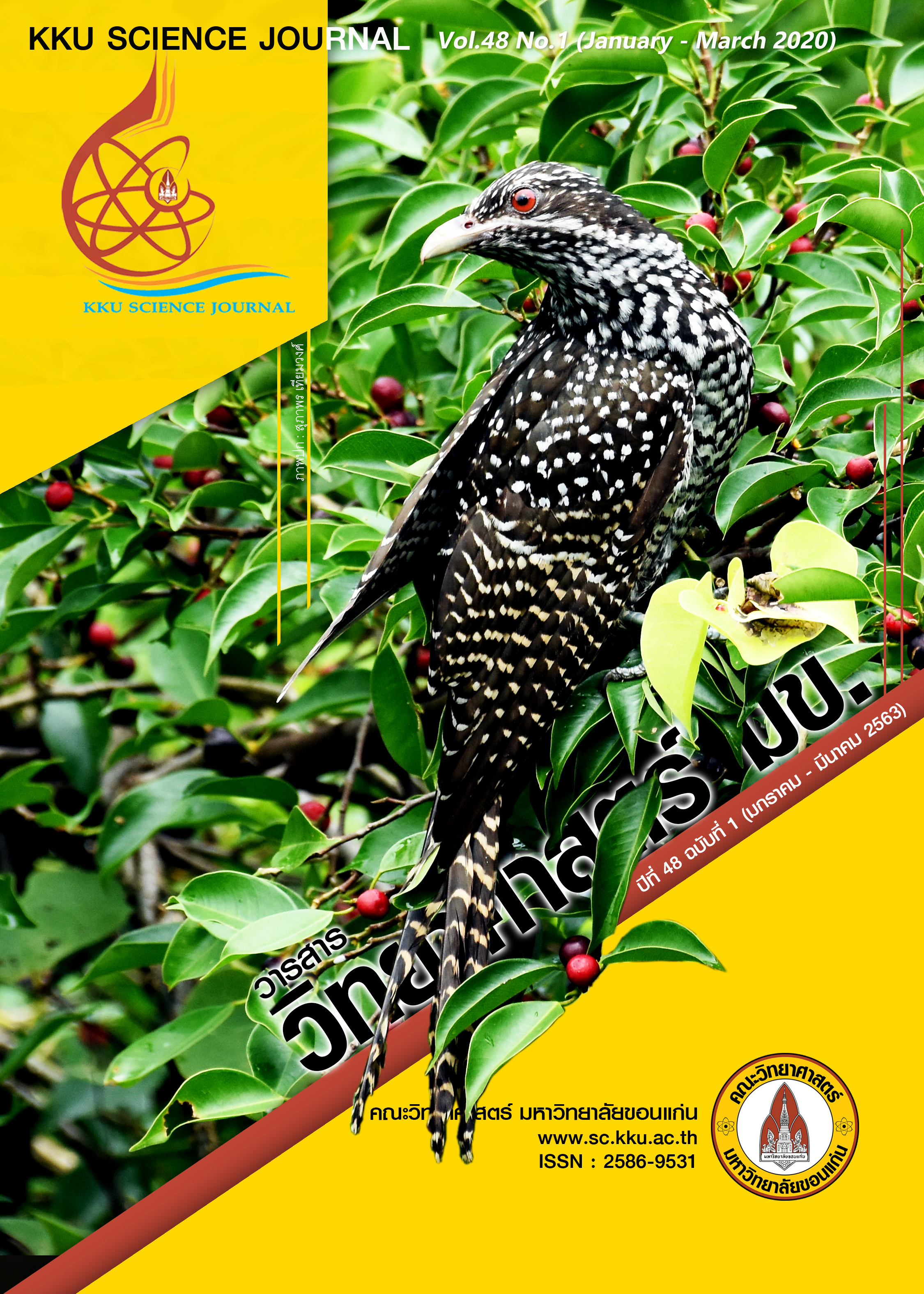Antioxidant and antimicrobial activities of essential oil from Thai Herbs to microorganisms causing dermatitis
Main Article Content
Abstract
The objectives of this study were to determine the antioxidant activity and the growth inhibition of the microorganisms causing atopic dermatitis (eczema) by various essential oils from 7 natural sources including Ocimum tenuiflorum L. (leaves), Alpinia alangal (Linn.) Swartz. (rhizomes), Cymbopogon nardus (Linn.) Rendle. (leaf sheaths), Citrus hystrix DC. (fruit peels and leaves) and Citrus aurantifolia (Christm) Swing (fruit peels and leaves) The antioxidant tests used were 2, 2-diphenyl-1-picrylhydrazyl (DPPH) free radical scavenging method and thiobarbituric reactive substances (TBARs) assay for lipid peroxidation. For antioxidant activity by DPPH assay, the results revealed that the essential oils of Cymbopogon nardus (Linn.) Rendle (leaf sheaths) possessed the highest IC50 of 0.116 ± 0.04 mg/ml, better than that of essential oils from Ocimum tenuiflorum L. (leaves) and Alpinia alangal (Linn.) Swartz. (rhizomes) with IC50 of 0.349 ± 0.91 mg/ml, and 0.418 ± 0.10mg/ml, respectively. For lipid peroxidation by TBARs assay, the results revealed that the essential oil of Cymbopogon nardus (Linn.) Rendle possessed the highest IC50 of 0.537 ± 1.08 mg/ml, better than that of essential oils from Alpinia alangal (Linn.) Swartz. (rhizomes) and Ocimum tenuiflorum L. (leaves) with IC50 of 0.586 ± 0.70mg/ml and 0.724 ± 0.27 mg/ml, respectively. Growth inhibition tests for 3 microorganisms by various essential oil showed that Cymbopogon nardus (Linn.) Rendle. provided the most inhibitory effects for Staphylococcus aureus Staphylococcus epidermidis and Candida albicans with the MIC of 0.98, 1.95 and 0.06 - 0.12 mg/ml, respectively. For the growth inhibition of Trichophyton mentagrophytes, Citrus aurantifolia (Christm) Swing (peels) and. Citrus hystrix DC. (peels) provided most inhibitory effects with the MIC of 0.24-0.49 and 0.49 mg/ml, respectively. The results of this study also revealed the potential utilization of the extracts of native medicinal plants in the growth inhibition of pathogenic microorganisms in order to cure and prevent the atopic dermatitis. For more benefits, Thai medicinal herbs can be commercially promoted for their significant usages.
Article Details

This work is licensed under a Creative Commons Attribution-NonCommercial-NoDerivatives 4.0 International License.


